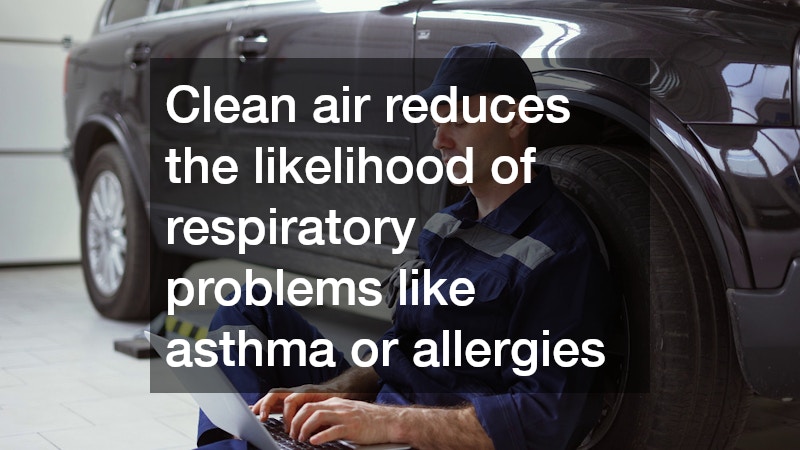
Learn the importance of auto exhaust extraction systems in ensuring the safety and health of workers in automotive repair and maintenance environments.
The Dangers of Auto Exhaust Fumes
Auto exhaust fumes contain a variety of harmful substances, including carbon monoxide, nitrogen oxides, and particulate matter. Prolonged exposure to these harmful emissions can lead to significant health risks, such as respiratory issues and long-term neurological damage.
Understanding these dangers is fundamental for setting up effective safety measures and protocols within automotive facilities.
One of the most critical dangers associated with auto exhaust fumes is carbon monoxide, a colorless and odorless gas that can cause sudden illness or death when inhaled in large quantities. Even at lower levels, carbon monoxide can lead to symptoms such as headaches, dizziness, and confusion, severely affecting worker productivity and health. Given these risks, having an effective exhaust extraction system in place is vital for protecting workers.
Additionally, auto exhaust contains a mix of gases and particulate matter that can exacerbate pre-existing health conditions, such as asthma or chronic obstructive pulmonary disease (COPD). Workers exposed to these pollutants may struggle with chronic health problems that could lead to increased medical costs and absenteeism. Thus, a proper understanding of exhaust dangers is crucial for implementing safety measures that prioritize worker health.
The Way Exhaust Extraction Systems Work
Auto exhaust extraction systems function by capturing harmful emissions directly at the source, effectively removing these pollutants from the work environment. Typically, these systems use a network of hoses, fans, and filters designed to funnel exhaust fumes outside the facility. The efficiency of these systems largely depends on their design and installation, ensuring that they are appropriately tailored to the workspace they serve.
There are several types of auto exhaust extraction systems, including overhead hose reels, under-car exhaust extraction systems, and portable extraction units. Overhead systems are particularly efficient for fixed positions, while portable units offer versatility for a movable work environment. Understanding the various types of systems available enables business owners to select the most suitable option for their specific needs.
In addition to capturing exhaust fumes, many modern extraction systems also incorporate filtration technologies that further purify the air before it is released outside. These filtration systems can effectively reduce the concentration of harmful particles, providing an extra layer of safety for workers. In this way, auto exhaust extraction systems not only mitigate risks but also contribute to an overall healthier workspace.
The Benefits of an Extraction System
Beyond ensuring compliance with safety regulations, installing exhaust extraction systems significantly enhances workplace air quality. Clean air reduces the likelihood of respiratory problems like asthma or allergies among workers, contributing to better overall health. When workers feel healthier and safer, they are more likely to perform at their best, positively impacting productivity and morale.
Moreover, the implementation of exhaust extraction systems can lead to improved compliance with health regulations set forth by various agencies, such as the Occupational Safety and Health Administration (OSHA) or the Environmental Protection Agency (EPA). These organizations establish safe exposure limits for hazardous substances, and having an extraction system helps businesses meet these requirements efficiently. Compliance not only protects workers but also shields businesses from potential legal issues.
Another significant advantage is the effect on operational costs. While there is an initial investment involved in purchasing and installing a proper extraction system, the long-term savings realized through reduced health-related absenteeism and improved worker efficiency can be substantial. This makes auto exhaust extraction systems not only a safety measure but also a financially sound investment for any workshop or automotive maintenance facility.
The Regulations for Exhaust Extraction
The installation and operation of exhaust extraction systems in the workplace are subject to various regulations applicable across industries, particularly in automotive repair sectors. Regulatory bodies such as OSHA outline standards regarding permissible exposure limits for hazardous substances, thereby necessitating adequate ventilation and exhaust systems. Understanding these regulations is essential for businesses seeking to maintain compliance while ensuring worker safety.
Additionally, the National Fire Protection Association (NFPA) provides guidelines related to the hazards of combustible exhaust and the appropriate measures needed to mitigate such risks. Following these guidelines not only helps in maintaining a safe working environment but also promotes a culture of safety that instills confidence in workers and customers alike. Thus, adherence to established regulations can significantly bolster a company’s reputation.
Moreover, ongoing maintenance and inspections are mandated to ensure that exhaust extraction systems function optimally. Regular checks help identify potential issues before they escalate into serious problems, ensuring that both employee safety and operational integrity are maintained. Businesses must stay informed about evolving regulations and standards to remain compliant and prioritize worker safety effectively.
Implementing proper auto exhaust extraction systems not only protects workers from hazardous fumes but also promotes a safer and more productive work environment. Prioritizing worker safety through effective exhaust extraction solutions is crucial in the modern workplace, and the benefits far exceed the initial costs. By investing in these systems, businesses can contribute to the well-being of their employees while ensuring compliance with health and safety regulations.




